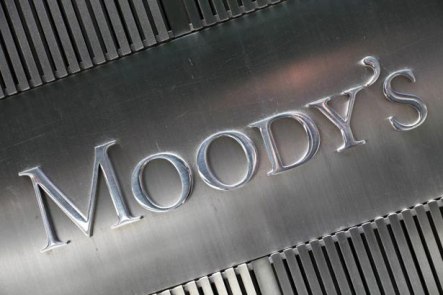Fragile growth, fiscal challenges drive negative outlook for sub-Saharan Africa economies in 2018 – Moody’s
 The World Bank projects economic growth in sub-Saharan Africa to continue to rise to 3.2 per cent in 2018 and to 3.5 in 2019, on the back of firming commodity prices and gradually strengthening domestic demand. However, it adds that growth will remain below pre-crisis averages, partly reflecting a struggle in larger economies to boost private investment.
The World Bank projects economic growth in sub-Saharan Africa to continue to rise to 3.2 per cent in 2018 and to 3.5 in 2019, on the back of firming commodity prices and gradually strengthening domestic demand. However, it adds that growth will remain below pre-crisis averages, partly reflecting a struggle in larger economies to boost private investment.
But while Moody’s expects growth in sub-Saharan Africa to accelerate to 3.5 per cent in 2018 from an estimated 2.6 per cent in 2017, supported by the strengthening global economy and a modest rise in commodity prices, it points out that the recovery remains fragile, uneven and sub-par and is barely above population growth.
“Falling productivity, reflecting relatively low investment and the challenging business environment, will also weigh on longer-term trends,” it adds in a report on the region issued recently.
The report points out that the region’s fragile growth, fiscal challenges and heightened political risk will drive negative outlook in 2018.
According to Moody’s, most of its rated sovereigns in the region are expected to stabilize their fiscal deficits, but at higher levels than were seen before the commodity price shock.
“The region is thus unlikely to see a decisive reversal in elevated debt levels given the countries’ consolidation challenges, increased interest costs and subdued growth.
Debt accumulation is likely to slow in 2018 and beyond due to improved (but still relatively low) commodity prices and some fiscal consolidation, but a return to 2013 debt-to-GDP levels will be challenging at a time of modest growth in the region,” it says.
Moody’s notes further that currency risks will remain heightened in countries with large shares of foreign currency public debt, and reserve buffers will provide only limited mitigation.
The ratings agency argues that as sub-Saharan African countries approach the peak of maturing international debt in the early 2020s, refinancing risks will continue to rise.
It points out that government liquidity stress, which is a key driver of its past rating actions in the region – remains heightened especially among commodity-dependent sovereigns. It continues to be driven by elevated fiscal deficits and challenging funding conditions, where greater reliance on domestic financing has increased borrowing costs, it says.
“Income levels have deteriorated in a number of countries in the region, increasing pressure on governments to extend subsidies, or constraining the government’s ability to remove subsidies as intended,” Moody’s states.
Commenting, Zuzana Brixiova, a Moody’s Vice President — Senior Analyst and the report’s co-author says, “Our negative outlook for sub-Saharan African sovereigns reflects the region’s subdued growth recovery, fiscal challenges and heightened political risks. Higher and more stable global growth will provide limited uplift to Africa’s growth because commodity prices are still low and there are domestic structural bottlenecks,” he says.
Adding that, “risks stemming from government balance sheet pressures and liquidity stress as well as external imbalances remain elevated, while domestic political tensions increase policy uncertainty and impede reforms.”
By Emmanuel K. Dogbevi
Copyright ©2018 by Creative Imaginations Publicity
All rights reserved. This news report, or any portion thereof may not be reproduced or used in any manner whatsoever without the express written permission of the publisher except for the use of brief quotations in reviews.
